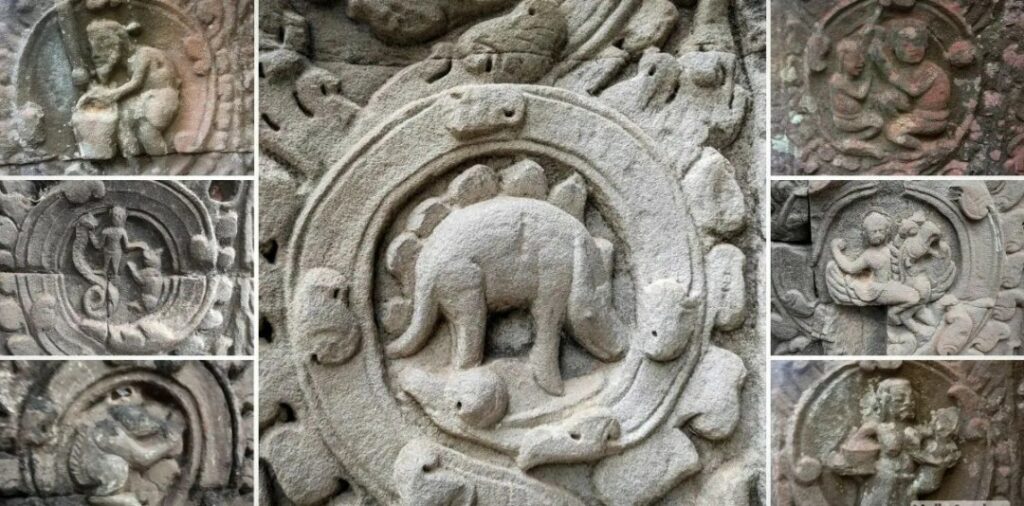A Controversial Carving in Cambodia’s Jungle Temple
Deep within the lush jungles of Cambodia lies Ta Prohm, a 12th-century temple-monastery wrapped in mystery and overtaken by nature. Among its crumbling walls and intricate carvings, one particular bas-relief has ignited debates and wild theories: a creature that some assert resembles a stegosaurus.

The Discovery That Shook History
In the late 1990s, authors Michael Freeman and Claude Jacques introduced this enigmatic carving to the public. In their books about Angkor’s temples, they described the relief as a convincing depiction of a stegosaur, which sparked widespread speculation. Could this be proof that dinosaurs and humans coexisted?

A Closer Look at the “Dinosaur”
The carving depicts an animal with a rounded back featuring a series of lobes, similar to the plates of a stegosaur. However, experts highlight several crucial differences:
- The “plates” might actually represent stylized foliage, commonly found in other temple carvings.
- Key features of a stegosaur, such as tail spikes, are absent.
- The creature’s proportions do not align with known dinosaur anatomy.

Theories Abound
As word of the carving spread, various explanations surfaced:
- A representation of a living dinosaur.
- A depiction of a known animal like a rhino or chameleon.
- A mythical creature, consistent with other fantastical temple art.
- A modern hoax or alteration.

The Verdict: Ancient Art or Modern Mystery?
While the true nature of Ta Prohm’s “dinosaur” remains uncertain, most scholars agree it is unlikely to be an actual stegosaur. The advanced Khmer civilization would have left more evidence of such an extraordinary creature.

A Lesson in Interpretation
This intriguing carving serves as a reminder of the challenges involved in interpreting ancient art. Whether it represents a stylized animal, a mythical beast, or even a recent addition, the “dinosaur” at Ta Prohm continues to captivate imaginations and draw visitors to this atmospheric jungle temple.
As you explore Ta Prohm’s moss-covered corridors, keep an eye out for this fascinating relief. While it may not provide evidence of living dinosaurs, it certainly enhances the temple’s air of mystery and wonder.


